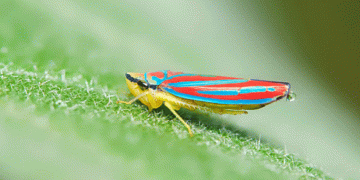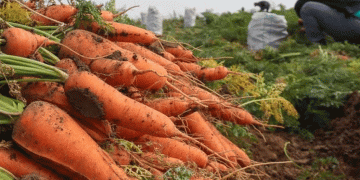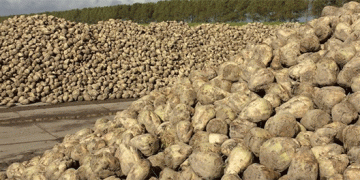California’s Monterey County is known for its contribution to the American food supply. With much of its farm acreage devoted to spinach, iceberg and other leafy greens, the Salinas Valley and surrounding area supply a large percentage of the leafy greens eaten by U.S. consumers.
And tucked among those fields of leafy greens and all the other crops are processing plants that have helped to grow the fresh-cut industry to what it is today – a nearly $20 billion portion of the produce industry.
And one of those processors sits on a piece of land between the Pacific Ocean and California Highway 1, tucked among strawberry fields just a stone’s throw from the rocky beaches of the ocean. That plant is owned by Watsonville Produce Co. of Moss Landing, Calif. It’s a state-of-the-art facility built in 2000 with four lines – three that handle spinach and other leafy greens and spring mix salad blends, and one line dedicated to Brussels sprouts.
Watsonville Produce has been in the fresh-cut industry since 1993, but the company’s roots go back even further. Founder and president Dominic Muzzi Sr. started farming in Monterey County in the 1960s, and started Watsonville Produce in 1984 to distribute produce from his farming operation to other local farmers. Two years after Watsonville Produce opened, the Muzzis got out of farming to focus on the distribution business. Less than 10 years later, the company had expanded to include the growing market of fresh-cut spinach, which is now the primary business.
The company processes for a few large-volume customers, with only a small portion of the total production marketed under the in-house brand – Dominic’s. It’s still a family operation, with Dominic Muzzi Sr. working alongside his son, Dominic Muzzi Jr., who is the vice president and head of operations, and daughter Lisa, who is the accounting manager.
The first Watsonville fresh-cut operation was in the Coachella Valley, and in 2000 production moved to the new plant in Moss Landing. In late 2002, Watsonville Produce started up a plant in Yuma, Ariz., that operates when production moves from California. In 2003, the company built a new plant in Yuma as a joint venture with Metz Fresh, one of its key customers.
Production at the Moss Landing plant runs through the end of November, then moves to the Yuma plant over the Thanksgiving weekend. Key personnel from all levels of management make the move, and line people are welcome to transition as well, but not many choose to, said Dominic Muzzi Jr. Some pieces of equipment make the move as well, which makes for a stressful weekend getting ready for the first shift Monday morning in a different plant, he said.
The company employs about 120 people between the two plants, with the processing room running two shifts and then a third shift to sanitize the facility overnight. The company also has a full-time quality assurance staff that ensures all the line employees are trained on food safety protocols. The QA staff also takes samples to test the sanitization procedures under the supervision of the food safety manager, a position the company has had for more than 10 years.
Watsonville Produce is dedicated to food safety at all levels, and it shows. The plant is designed with the latest safety measures – everything is stainless steel and all panels can be washed down, including the ceilings – and even the hydrocoolers are stainless steel. The fresh-cut lines have the latest sorters that use lasers and ultraviolet light to detect not only foreign materials but also leafy green leaves that don’t meet the high specifications set by the company. But technology will only take you so far, Muzzi Jr. said. Every employee needs to be able to act in a way that is food safe, and should speak up with problems they’ve noticed or ideas for improving food safety. Muzzi said there should be a balance between technology and the human component.
“I kind of split the middle. Technology is good, but if you go too far too fast you can run into roadblocks. We have to focus on food safety and sanitation, and on employee education,” he said.
Employees are trained in the basics of hand-washing, and they’re also trained to wipe down their areas so there’s no chance for water to build up in the plant. Treating employees like family has helped with the training, Muzzi Sr. said. Everyone’s more willing to put in the extra effort to wash their hands correctly or police their area if they understand that if something happens to the business, it directly affects them, he said.
The QA personnel conduct monthly internal audits that are viewed by different managers, so there’s always a different set of eyes seeing the audit, Muzzi Jr. said. Both plants also are audited annually by third-party auditors Primus Labs and the American Institute for Baking, as well as the occasional audit or walk-through by customers. Watsonville Produce’s training and food safety measures can be seen in the audit results: Over the last seven years of audits from Primus Labs, the company has averaged a 98 percent – that’s over 28 audits, Muzzi Jr. said.
“It shows the level of food safety we’re trying to keep,” he said.
Muzzi Jr. doesn’t want to lose the close-knit, family atmosphere that has worked so well for Watsonville Produce, but he hopes to see the company continue to grow. He’s not looking to get into any new products, but he wants to continue to grow the volume with his current customers – and possibly add more customers in the future.
“I see us doing the same commodities with the same steady growth,” he said.
Although it’s often the large national processors in central California that get a lot of the attention, companies like Watsonville Produce are carving out their own niche by focusing on customer service and food safety. With retail and foodservice buyers demanding more food safety measures, it’s the Watsonville Produce’s of the industry that are in a prime spot to grow the fresh-cut segment.





























